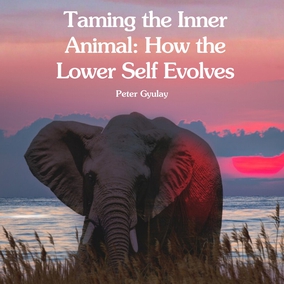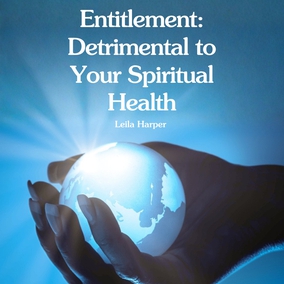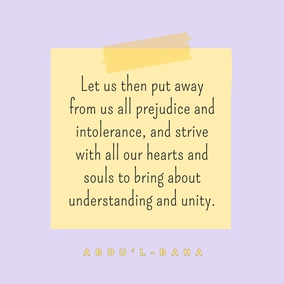The views expressed in our content reflect individual perspectives and do not represent the authoritative views of the Baha'i Faith.
Anyone familiar with poetic considerations of aging, death and dying knows Dylan Thomas’ plaint: “Do Not Go Gentle into that Good Night.”
The poem begins with the aphorism that someone who is aged should not meekly accept the fate of becoming decrepit, should not approach death with hushed acquiesce:
Do not go gentle into that good night,
Old age should burn and rave at close of day;
Rage, rage against the dying of the light.
In particular, the speaker tries to encourage or coerce his father—who, we infer, is sinking peacefully into death—to fight manfully against entering this “good night.” In truth, we correctly presume the poem says more about the speaker than the father.
Perhaps he fears death, or else he is unable or unwilling to accept his father’s meek compliance with what he judges as an unnatural response to entering the “dark night” of death—which is a “good night” only in the sense that it is a farewell (a “goodnight”) to his son. After a series of examples of those who have refused to passively accept the diminishing of their vitality, the speaker pleads with his father to do the same—not to accept his decline meekly, but to rage against death:
And you, my father, there on the sad height,
Curse, bless, me now with your fierce tears, I pray.
Do not go gentle into that good night.
Rage, rage against the dying of the light.
In a noticeably different response to aging, the speaker/persona in Yeats’ “Sailing to Byzantium” is himself an aging man who makes the following distinction between two categories of “aged”—not between those who struggle against aging and dying versus those who succumb, but between those who allow themselves to become intellectually and spiritually stagnant in old age versus those who strive relentlessly to attain a spiritual and intellectual ascent that belies the insignificant outer appearance of their dwindling physical self:
An aged man is but a paltry thing,
A tattered coat upon a stick, unless
Soul clap its hands and sing, and louder sing
For every tatter in its mortal dress …

Yeats
This metaphor for the physical aspect of an aged man as a “tattered coat upon a stick” is one of the more powerful images in poetry, being at once visual and visceral, and yet so accessible and compact. Yeats’ image of the aged physical self stands in stark contrast to the latent capacity still available if the real “self” of the person—the “essential self” or “soul”—would but “clap its hands and sing.”
This pithy image is an obvious but provocative allusion to one’s ability to acquire and express wisdom through art. Clearly the “tatters” of the physical self symbolize the strife, pain, and turmoil the body has endured, the outer scars of life that represent those milestones of learning achieved by the inner self.
There is so much more to learn from Yeats weighty thoughts expressed in his beguilingly simple language. In particular it is important to note the speaker’s conclusion about what he intends to do as a result of observing in the very first line how “That is no country for old men”:
Nor is there singing school but studying
Monuments of its own magnificence;
And therefore I have sailed the seas and come
To the holy city of Byzantium.
Here the speaker observes that the best opportunity for a soul to understand what is worth singing about and how to “sing”—to express what it has learned—is by studying the masterpieces of the past that serve as “monuments” to the magnificence of the capacity of the human soul to discover the important truths of life and subsequently to express these verities through art.
Having sailed away from “that country” and having set his course for the “holy city of Byzantium,” the speaker clearly desires to escape from a materially and sensually oriented life to an environment where voices of wisdom harkening to the spirit and the soul of humanity will be heard and heeded.
In the work of those poets who address the matters of the human heart, the holy city of Byzantium symbolizes such an environment, one yet to be born or created. The poets tell us, then, that age is capable of bringing with it wisdom, learning, and the spiritual powers than can be acquired solely through life experience. In the same way, the Baha’i teachings ask each human being to approach the holy city:
We are told in the Holy Scripture that the New Jerusalem shall appear on earth. Now it is evident that this celestial city is not built of material stones and mortar, but that it is a city not made with hands, eternal in the Heavens.
This is a prophetic symbol, meaning the coming again of the Divine Teaching to enlighten the hearts of men. It is long since this Holy Guidance has governed the lives of humanity. But now, at last, the Holy City of the New Jerusalem has come again to the world, it has appeared anew under an Eastern sky; from the horizon of Persia has its effulgence arisen to be a light to lighten the whole world. We see in these days the fulfilment of the Divine Prophecy. Jerusalem had disappeared. The heavenly city was destroyed, now it is rebuilt; it was razed to the ground, but now its walls and pinnacles have been restored, and are towering aloft in their renewed and glorious beauty. – Abdu’l-Baha, Paris Talks, p. 84.
















Comments
Sign in or create an account
Continue with Googleor